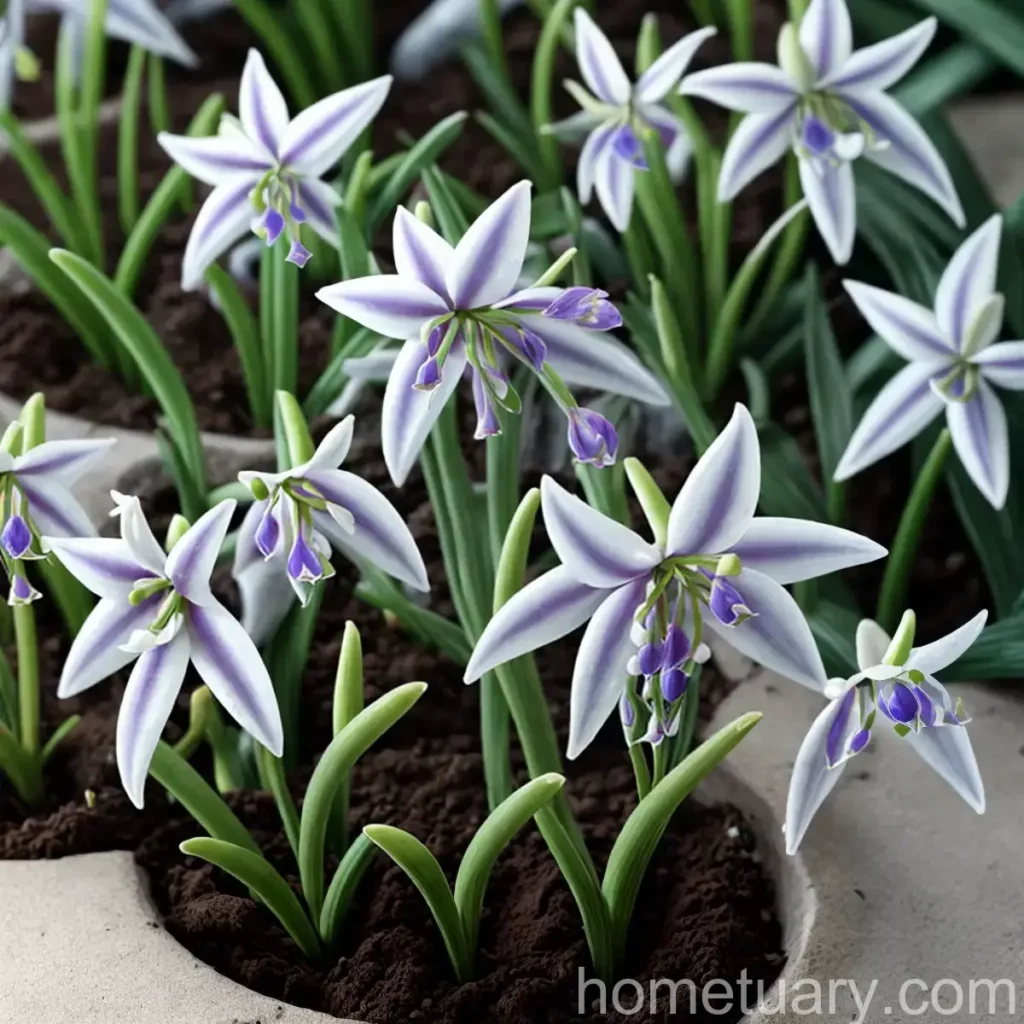Glory of the Snow (Chionodoxa Forbesii): A Complete Guide
Introduction
Glory of the Snow (Chionodoxa Forbesii) is a breathtaking spring-blooming flower that has the ability to transform landscapes into stunning colorful displays. Known for its delicate and charming appearance, this plant is a favorite among gardeners looking to enhance their spring gardens with a burst of vibrant colors. In this comprehensive guide, we will delve into the various aspects of this beautiful plant, including its characteristics, cultivation, maintenance, and much more.
What is Glory of the Snow (Chionodoxa Forbesii)
The Glory of the Snow, or Chionodoxa Forbesii, is a member of the Asparagaceae family, commonly known as the squill family. This perennial plant is native to the eastern Mediterranean, particularly regions such as Turkey, the Caucasus, and the Middle East. It is characterized by its star-shaped flowers that bloom in early spring, adding a delightful touch of blue, pink, or white to gardens and landscapes.
Chionodoxa Forbesii Characteristics
- Plant Type: Perennial bulb
- Mature Size: 4-6 inches (height), 3-4 inches (spread)
- Bloom Time: Early to mid-spring
- Flower Colors: Blue, pink, white
- Foliage: Linear or strap-shaped, green
Key Takeaways
Glory of the Snow Plant
- Lovely, star-shaped flowers in blue, pink, or white
- Native to the eastern Mediterranean
- Flourishes in early to mid-spring
Chionodoxa Forbesii Care
- Requires well-drained soil
- Thrives in full to partial sunlight
- Moderate water needs
- Low-maintenance plant
Growing Chionodoxa Forbesii
- Ideal for naturalizing in woodland areas
- Suitable for rock gardens and border plantings
- Complements early spring blooming plants
Culture
Uses
The Glory of the Snow is primarily grown for its captivating spring blooms. Its charming flowers make it an excellent choice for various landscaping and gardening purposes, including:
-
Rock Gardens: The low-growing nature of Glory of the Snow makes it an ideal addition to rock gardens, where its colorful blooms create an enchanting display against the rugged backdrop of rocks and boulders.
-
Border Plantings: When planted along garden borders, Chionodoxa Forbesii adds a delightful touch of color, creating a striking contrast against the surrounding foliage.
-
Woodland Gardens: It is widely used for naturalizing in woodland areas, where its dainty flowers add a touch of magic to the serene and rustic landscape.
Water
Proper watering is essential for the successful cultivation of Glory of the Snow. It is important to maintain consistently moist soil to support healthy growth and vibrant blooms. However, it is crucial to avoid waterlogging as this can lead to bulb rot. A moderate watering regimen that allows the soil to dry slightly between waterings is ideal for this plant.
Sunlight
Glory of the Snow thrives in full to partial sunlight. It is essential to provide adequate sunlight to ensure strong, healthy growth and abundant flowering. When planted in partial shade, the plant may still bloom well, but a location with at least six hours of sunlight per day is recommended for optimal results.
Fertilizer
While Glory of the Snow is not particularly demanding when it comes to fertilizer, a light application of a balanced, all-purpose fertilizer in early spring can help support healthy growth and blooming. It is important to avoid over-fertilization as excessive nutrients can negatively impact its overall performance.
Soil
Well-draining soil is crucial for the successful cultivation of Glory of the Snow. The plant thrives in various soil types, including loamy, sandy, or clay soils, as long as they are well-draining. Incorporating organic matter such as compost or peat moss into the soil can further improve its drainage and fertility.
Pruning
Pruning requirements for Glory of the Snow are minimal. Once the flowers have faded and the foliage begins to yellow and wither, the plant can be lightly trimmed back. However, it is important to allow the foliage to die back naturally, as this process allows the bulbs to store essential nutrients for the following year’s growth and flowering.
Propagation
Propagation of Glory of the Snow can be achieved through division or by planting new bulbs. When dividing existing clumps, it is best done in late spring or early summer, once the foliage has died back. The bulbs can be carefully lifted and separated, and then replanted in the desired location. When planting new bulbs, it is best to do so in the fall, allowing them to establish and develop roots before the following spring.
Container Popularity
Glory of the Snow is well-suited for container gardening and is a popular choice for spring displays in containers and pots. Its compact size and vibrant blooms make it an excellent addition to patio, balcony, or courtyard gardens. When planting in containers, it is essential to use well-draining potting mix and provide adequate sunlight and water.
Container Common Diseases
Several common diseases can affect Glory of the Snow when grown in containers, including:
-
Botrytis Blight: This fungal disease can cause gray mold on the foliage and flowers, particularly in moist and humid conditions.
-
Root Rot: Overly wet or poorly draining growing media can lead to root rot, causing the plant to wilt and decline.
-
Bulb Rot: Excessive moisture and poor ventilation in containers can contribute to bulb rot, leading to the deterioration of the bulbs.
Disease Diagnosis
Detection of diseases in Glory of the Snow is crucial for implementing timely interventions. Symptoms such as wilting, discoloration, or unusual growth should be carefully observed. If any signs of disease are noticed, it is important to promptly address the issue through cultural or chemical control methods to prevent the spread of the disease and minimize its impact on the plant.
Common Pests
While Glory of the Snow is relatively resistant to pests, it may occasionally be targeted by certain insect pests such as:
-
Narcissus Bulb Fly: The larvae of this fly can infest and damage the bulbs of Glory of the Snow, leading to reduced vigor and flowering.
-
Slugs and Snails: These pests are known to feed on the foliage and flowers, causing unsightly damage.
-
Rodents: Mice and voles may feed on the bulbs, posing a threat to the plant’s overall health.
Botanist’s Tips
-
Companion Planting: Pair Glory of the Snow with other early spring bulbs such as crocuses, daffodils, and tulips to create a diverse and colorful spring display.
-
Naturalizing: Allow Glory of the Snow to naturalize in lawns, meadows, or woodland areas for a delightful and effortless spring show.
-
Layering: Plant Glory of the Snow beneath deciduous trees or shrubs to create beautiful layered displays as the foliage emerges in early spring.
Fun Facts
-
Greek Origins: The botanical name Chionodoxa is derived from the Greek words “chion” meaning snow and “doxa” meaning glory, a nod to the plant’s ability to bloom even among the late snows of winter.
-
Deer Resistant: Glory of the Snow is considered deer resistant, making it an excellent choice for gardens where deer may be a nuisance.
-
Attracts Pollinators: Its early spring blooms provide a vital food source for early pollinators such as bees and butterflies, supporting local ecosystems.
Links to External Resources
For further information and resources on Glory of the Snow (Chionodoxa Forbesii), the following links are recommended:
- The Royal Horticultural Society (RHS) – Growing Chionodoxa
- University of Maryland Extension – Bulbs for the Home Garden
- American Society for the Prevention of Cruelty to Animals (ASPCA) – Plants Toxic to Animals: Chionodoxa
- The Spruce – Glory of the Snow – Plant Profile and Growing Guide
In conclusion, Glory of the Snow (Chionodoxa Forbesii) is a remarkable and charming plant that brings joy and color to early spring gardens. With its attractive blooms, low-maintenance nature, and versatility in various garden settings, it stands as a delightful choice for gardeners seeking to brighten their landscapes with the magic of spring.
As it continues to captivate with its beauty and resilience, the Glory of the Snow remains a beloved addition to gardens and natural landscapes, enriching the environment and delighting all who encounter its enchanting blooms.
Remember to share your experiences, tips, and insights about cultivating and cherishing Glory of the Snow, and let’s celebrate the glory it brings to our gardens and hearts.















